The House of Tudor (43 page)
Read The House of Tudor Online
Authors: Alison Plowden
Tags: #History, #Biography & Autobiography, #Royalty, #Nonfiction, #Tudors, #15th Century, #16th Century

56 Winchester Cathedral where Mary and Philip were married on 25 July 1554.
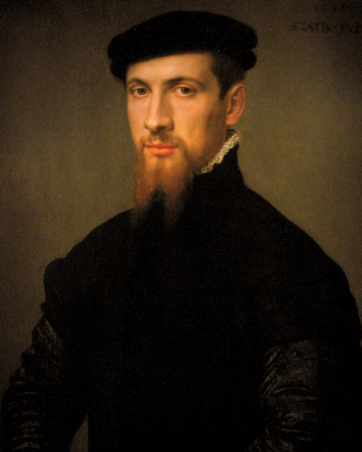
57 Simon Renard, an able diplomat and one of Mary’s closest advisers.
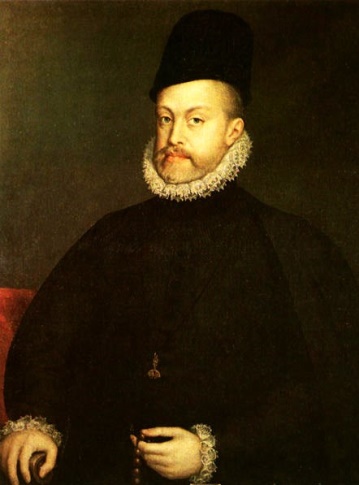
58 Philip II of Spain.
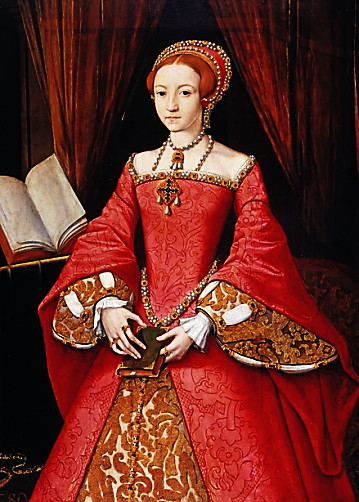
59 Princess Elizabeth by an unknown artist, f. 1542-47.
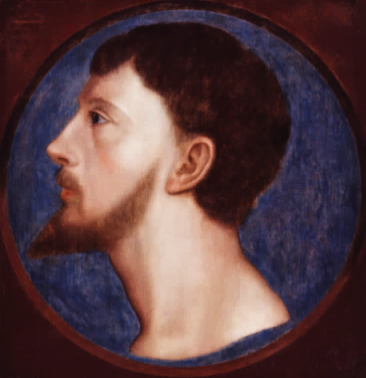
60 Sir Thomas Wyatt, leader of the unsuccessful rebellion against Mary which began in January 1554. The rebels intended to make Elizabeth queen; their defeat led to her arrest and imprisonment.
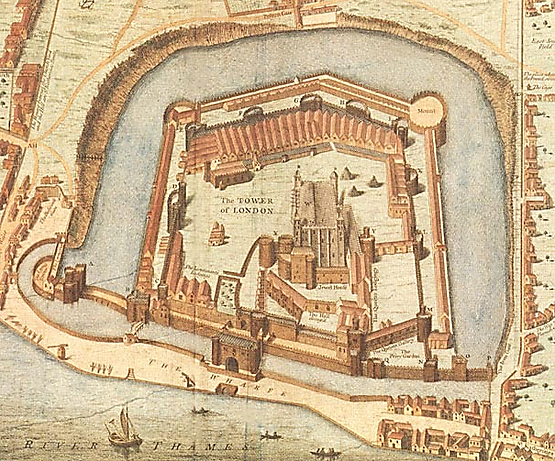
61 The Tower of London; after a plan drawn in 1597.
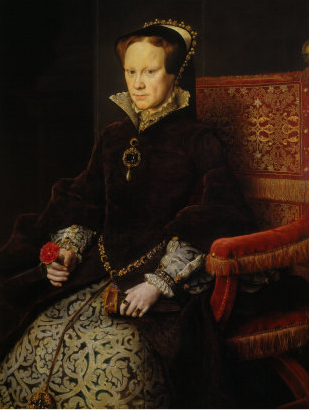
62 Mary in later life by Antonio Moro.
She was lodged in a room in the Bell Tower, and Winchester and Sir John Gage began to lock the doors ‘very straitly’ and to discuss further security arrangements. But the Earl of Sussex, who all along had shown himself more compassionate, or more far-sighted, intervened. They would be wise, he remarked, not to be over-zealous and to remember that ‘this was the King our master’s daughter’ as well as the Queen’s sister. ‘Therefore’, said Sussex, ‘let us use such dealing that we may answer it hereafter, if it shall so happen; for just dealing is always answerable.’ This shrewd reminder that their prisoner might yet become their Queen went home, and the others departed rather subdued.
All this time preparations for the Queen’s marriage had been going forward and the only thing lacking now was the presence of the bridegroom; but Simon Renard, only too conscious of his heavy responsibilities, felt serious doubts as to the wisdom of allowing Philip to hazard his precious person in an ungrateful and heresy-ridden land - at least while it continued to harbour Elizabeth Tudor and Edward Courtenay. In Renard’s opinion a more than suspicious negligence was being shown over bringing these two ‘great persons’ to trial, and he could only conclude that delay was being deliberately created in the hope that something would crop up to save them. The ambassador saw the Queen on Easter Saturday and took the opportunity of expressing some of his misgivings, adding that until ‘every necessary step’ had been taken he would not feel able to recommend the prince’s coming to England. The threat was implicit and Mary replied, with tears in her eyes, that ‘she would rather never have been born than that any harm should be done to his Highness.’ She promised to see to it that Elizabeth’s and Courtenay’s trials were over before his arrival.
This was all very well but, although Renard continued to press the matter, it seemed there was still not enough evidence against cither of the suspects even to begin proceedings. As far as Courtenay was concerned, the circumstances were certainly suggestive, but the fact remained that he had not actually
done
anything. He had not gone down to the West Country. He had not, at any time, taken up arms against the Queen. He had not attempted to escape. The plan to marry him to Elizabeth had been openly raised by William Paget the previous autumn, but Courtenay had rejected it on the grounds that such a match would be unworthy of his unblemished lineage. As for Elizabeth, Renard was obliged to report that the laws of England did not provide penalties applicable to her ‘because those with whom she plotted are fugitives’. ‘Nevertheless’, he went on, ‘the Queen tells me that fresh proof is coming up against her every day, and there were several witnesses to assert that she had gathered together stores and weapons in order to rise with the rest and fortify a house in the country whither she had been sending her provisions.’ The house in the country was, presumably, Donnington, but this promising line of enquiry had turned into a blind alley and Elizabeth swore that any defensive preparations made at Ashridge were simply as a protection against the Duke of Suffolk who had been in the neighbourhood at the time. Frustrating though it might be for those like Renard and Stephen Gardiner, who believed that as long as Elizabeth lived there would be no peace in England, the government was no nearer to making out a case against her than it had been two months earlier.
On 11 April Thomas Wyatt, who had been kept alive in the hope that he might yet be induced to incriminate his fellow prisoners, was executed at last and on the scaffold he explicitly exonerated both Elizabeth and Courtenay from any guilty knowledge of the rebellion. Although the authorities tried to suppress it, this news spread rapidly and joyfully through the city and it was now clear that there would be very little chance of ever securing a conviction against the princess. A mere detail like lack of proof might not have mattered in the days of the Queen’s father or grandfather, but Mary possessed none of the ruthless self-confidence which had characterized the two Henry Tudors. Already, to Simon Renard’s barely suppressed annoyance, she was beginning to pardon her rebels and this despite the fact that open opposition to her policies, her religion and her marriage was already beginning to reappear. Violent incidents in churches and physical attacks on priests saying mass were on the increase; and inflammatory pamphlets had begun to circulate in the capital - one urging all Englishmen to stand firm and keep out the Prince of Spain, another ‘as seditious as possible and in favour of the Lady Elizabeth’. Even the children were joining in rough games where the ‘Spaniards’ were always heavily defeated.
To make matters worse, the Council, an unwieldy and cantankerous body, was split from top to bottom. ‘Quarrels, jealousy and ill-will have increased among the councillors’, wrote Renard on 22 April, ‘becoming so public that several of them, out of spite, no longer attend the meetings. What one does, another undoes; what one advises, another opposes; one strives to save Courtenay, another Elizabeth; and such is the confusion that one can only expect the upshot to be arms and tumult.’ Renard believed that the Queen would soon be persuaded to release Courtenay altogether while, as for Elizabeth, it had now been officially admitted that the lawyers could not find sufficient evidence to condemn her and she was already being allowed out to walk in the Tower gardens, so it looked as if her release, too, was only a matter of time.
Elizabeth owed her preservation to a number of factors - her own impenetrable discretion, the strength of public opinion, government weakness and lack of direction - but most of all she owed it to her sister. Mary’s opinion of her had not changed - early in March she told Renard sourly that ‘Elizabeth’s character was just what she had always believed it to be’ - but, in spite of her deep-rooted personal dislike and distrust of the girl and in spite of the pressure being exerted on her most vulnerable flank, the Queen had stuck stubbornly to her principles. Her conscience had forced her to insist on a thorough and painstaking enquiry, thus creating the very delay which Renard knew would be fatal, and as long as the case remained ‘not proven’ Elizabeth would continue to get the benefit of the doubt.
The problem now arose of what was to be done with the princess. She could not be left in the Tower indefinitely; neither would it be safe to set her free, and the Queen could scarcely be expected to receive her at Court - not yet at any rate. Some sort of face-saving formula would have to be found and Mary eventually fell back on the time-honoured expedient of sending her sister to live under restraint in a remote country house. After a good deal of indecision, the manor of Woodstock, a hunting-lodge once much favoured by the Plantagenets, was selected, although Renard would have preferred some more secure northern castle. Elizabeth had now been consigned to the custody of Sir Henry Bedingfield, a stolid, staunchly Catholic gentleman from Oxborough in Norfolk, whose loyalty to the Queen could not be questioned, and on 19 May she left the Tower under his escort to a salute of guns from the merchants of the Steelyard and the cheers of the Londoners, who believed she had been released. The journey to Woodstock, although accomplished in a warped and broken litter, rapidly developed into something suspiciously like a triumphal progress. At Windsor the townsfolk turned out
en masse
to see her pass; at Eton she was nearly mobbed by the scholars and church bells were rung defiantly in many villages along the route, while everywhere the country people crowded to the roadside to cry blessings on her, to throw cakes and flowers into her lap and wish her Godspeed.
At the end of the month Mary also left London, thankful to escape from that insolent, irreligious city where she spent her days shouting unavailingly at the Council, surrounded by an almost tangible miasma of treachery and deceit which she was yet powerless to disperse. No wonder she longed for a husband who would relieve her of the burden of government - a burden she was beginning to find insupportable. The Queen’s destination was Richmond, from where she was expecting soon to ride south to meet her bridegroom. It had been agreed that Philip should land at Southampton and the wedding take place in Winchester Cathedral -no one felt like risking a ceremony in London - but May turned into June and Philip was still in Spain paying a leisurely round of farewell visits. By the beginning of July the delay was becoming embarrassing. Mary told Renard that it was painful to her because it encouraged the heretics, but there was deeper pain in the sense of rejection.
